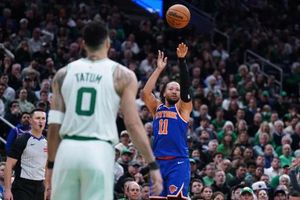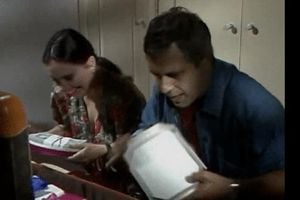The 2024 election results for British Columbia have sparked intense discussions and excitement among party supporters and the public alike. After days of suspense and counting, the NDP, led by incumbent Premier David Eby, has emerged with enough seats for a bare majority, securing 47 out of 93 ridings. Meanwhile, the Conservative Party has made significant strides, capturing 44 seats, marking their first substantial presence within the provincial legislature. The Green Party has managed to retain their two seats, but it’s the Conservatives’ surge that's the headline here.
The drama isn’t over yet, as two ridings - one from each major party - are under the spotlight for upcoming judicial recounts due to their razor-thin margins. For the NDP, Surrey-Guildford was particularly intense; Garry Begg, the NDP incumbent, initially trailed but narrowly clinched his seat, finishing just 27 votes clear of Conservative rival Honveer Singh Randhawa. Elections B.C. counts all absentee ballots before confirming results, and with only 38 votes standing between Begg and the requirement for a recount, this outcome speaks volumes about the competitive nature of this election.
Another hotly contested area is Kelowna Centre, where Conservative Kristina Loewen leads the NDP’s Loyal Wooldridge by just 38 votes. Originally starting off with what seemed to be a comfortable lead, Loewen saw her advantage dwindle as mail-in and assisted ballots were counted.
While results were still being finalized, Eby expressed gratitude and acknowledgment for the public’s urgent concerns reflected in the close outcomes. He stated, “We are listening to the message voters sent with this close election, and will be getting to work on today’s tough challenges right away.” It seems being at the helm of the NDP amid such intense competition has placed Eby and his team under close scrutiny.
The surge of the Conservative Party, once virtually non-existent, has shifted many perceptions about B.C. politics. For comparison, back during the 2020 provincial election, the party barely registered at 1.9% of the total vote and had no representation. Fast forward to 2024, and they’ve secured their status as the Official Opposition, breathing new life and vibrancy back onto the political stage.
John Rustad, the Conservative leader who took the helm just last year, couldn’t contain his pride. “It was quite a major accomplishment. I’m very proud of the team,” he remarked, acknowledging the collective effort made by his party members. Rustad attributed this remarkable turnaround to strategic planning and active engagement from volunteers.
Political analysts are noting the circumstances contributing to this shift. According to some experts, the newfound attention on provincial politics stemmed partly from the breakdown of B.C. United, previously the center-right alternative. The NDP’s attempt to dismiss rumors of irregularities during the counting process cites the assurance from Conservative representatives themselves, who noted their confidence amid the counting efforts.
Another poignant factor highlighted was the growing disillusionment among right-leaning voters stemming from their previous affiliations. Rustad, who was previously with the B.C. Liberal Party, has seen members from smaller right-wing parties move to his side, which reflects the yearning for cohesion among those constituents.
B.C. United leader Kevin Falcon's endorsement of the Conservatives shifted the political dynamic, facilitating Conservative candidates to easily capitalize on the openings left by the disbanding party. This strategic backing allowed voters to coalesce around Rustad’s team, resulting in their significant seat gains.
Voter sentiment is varied, and the question now is whether the Conservative surge indicative of lasting change or merely the result of current political dynamics. Justin Leifso, from the University of Victoria, believes the outcomes hint at something more than momentary shifts, predicting the emergence of realigned right-wing politics.
He notes the Conservatives’ rise is evident, but still emphasizes the need to analyze their remaining challenges, particularly around urban voter connections. The NDP remains strong within the densely populated regions, primarily Greater Vancouver and Vancouver Island. Even Eby remarked, “That division is a real concern for me,” acknowledging the gap left by voters outside the urban centers.
The political canvas of British Columbia is now poised for fascinating developments. Eby plans to maintain dialogue and cooperation with the new Opposition MLAS, perhaps indicating the necessity for bipartisanship moving forward. Notably, Ravi Kahlon, NDP MLA-elect, reaffirmed their commitment to engaging other parties for the common good of British Columbians. “The cooperation we’ve committed to – working with other parties – will still remain,” Kahlon noted optimistically.
This election, reflective of broader trends, serves as both a wake-up call for established parties and an opportunity for reflection on the provinces' ideological diversities. The political dynamics are shifting, and how the elected parties respond to the electorate’s desires will surely color the political discourse leading through the coming years. With impending judicial recounts and the NDP’s focus on collaboration, British Columbia may soon navigate new legislative waters amid its changing political tides.



